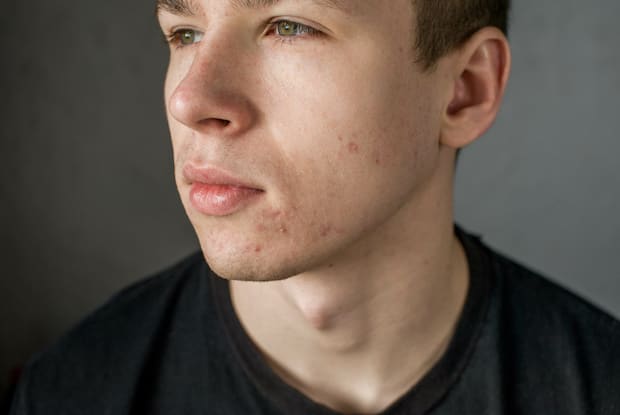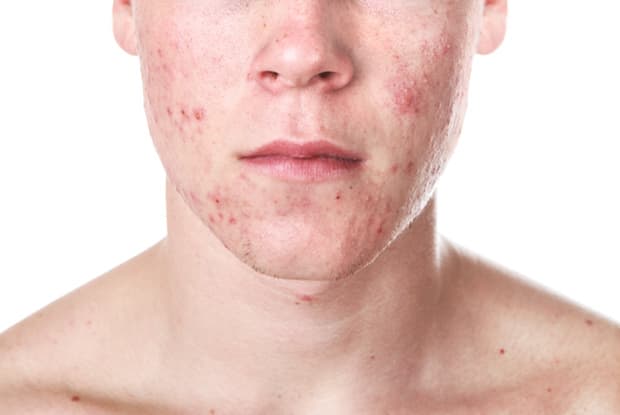Table of Contents
Overview
Acne and rosacea are two common disorders that affect the skin. They are often confused for each other, but they do have several similarities and differences. According to the National Rosacea Society, there are at least 16 million Americans affected by rosacea. These conditions can be kept under control with medications like Azelex, there are still 40-50 million Americans who suffer from acne. There is considerable overlap between rosacea and acne patients, but the diagnosis of the conditions and treatments can often differ. [1]
The subtle differences
Rosacea is a common skin condition that causes redness and visible blood vessels to appear on the face. Rosacea can affect anyone but typically occurs in adults, whereas acne usually appears earlier in life. Like acne, red, pus-filled bumps may accompany the presence of rosacea. [2]
Many people suffer from both of these conditions, but dermatologists distinguish the two through the presence of comedones. Comedones are types of pimples or bumps that occur in those with acne. They are visibly clogged pores that are not inflamed. Open comedones are clogged hair follicles that create a blackhead. An open comedone is white in the middle with a thin layer of skin, which is called a whitehead.
Inflamed bumps may include papules, pustules, nodules, and cysts. These types can occur in both rosacea and acne, so your doctor will have to examine the area to determine your condition. That is the general difference between the two conditions but read on to learn more about treatments and symptoms for rosacea and acne. [3]

Rosacea symptoms
The symptoms of rosacea may present the same as acne, but some differences can help decipher which condition you are experiencing. Some common symptoms of rosacea include:
- Facial redness: Persistent redness in the central part of the face characterizes rosacea. Redness happens because the blood vessels in the nose and cheeks swell and become visible.
- Enlarged nose: The nose of the skin can become thicker and bumpy. This condition is called rhinophyma and results in a bumpy nose. Rhinophyma is more common in men.
- Eye problems: Rosacea may affect the eyes, causing red eyes and swollen eyelids.
- Swollen, red bumps: Those with rosacea can have acne-like symptoms when they develop pus-filled pimples on the face. This can also lead to the skin feeling hot and tender. [2]
Chronic acne symptoms
Acne can vary in its severity, depending on the condition of your skin. Common acne can sometimes become chronic if the internal causes of the acne are not resolved. Some symptoms of chronic acne can include:
- Whiteheads (closed, plugged pores)
- Pus-filled lumps beneath the skin (cystic lesions)
- Pimples, which are papules with pus at the tips
- Blackheads (open, plugged pores) [4]
Causes of rosacea
Unlike acne, there is no known cause for rosacea, but hereditary and environmental factors play a large factor. Flare-ups of rosacea may be due to:
- Spicy foods
- Mites: Tiny insects called Demodex folliculorum live on the skin and are not harmful. You might experience rosacea if you have a sensitivity to the mites.
- Exercise
- Sunlight or wind
- Bacteria: The H. pylori bacteria that live in the gut can increase the amount of digestive hormone (gastrin) in your body. This can cause your skin to look flushed.
- Alcohol
- Hot drinks
- Blood vessel trouble: problems with blood vessels in your face may make them visible
These are some common causes of rosacea, but factors like age, gender, and skin tone can put you at a higher risk. Having severe acne and a family history of rosacea make it more likely that rosacea can occur. The risk is also increased if you are a woman and have a pale complexion. [5]
Causes of chronic acne
As described briefly above, acne is a condition that occurs when hair follicles become filled with oil and dead skin cells. It is a common occurrence for teenagers and those in adolescence and usually subsides with age. Chronic acne is a little more complicated and caused by more factors than puberty.
The following symptoms usually accompany chronic acne:
- Significant psychological impact from acne
- Large surface area of the body is affected
- The body is studded with black or whiteheads [6]

Acne most commonly occurs on the face, forehead, chest, upper back, and shoulders. These spots contain a large concentration of oil (sebaceous) glands. Some factors that can cause this condition can include:
- Excess oil production
- Certain medications: Drugs containing corticosteroids, testosterone, or lithium can increase your chance of acne.
- Hair follicles clogged by oil and dead skin
- Bacteria
- Over-activity of hormones (androgens): Pregnant women and those who use hormonal birth controls may experience hormonal changes that can affect sebum production, which causes oil glands to enlarge into pimples.
- Stress
- Diet: Skim milk and carbohydrate-rich foods, like bread, bagels, and chips, may worsen your acne conditions. [4]
Types of rosacea
Dermatologists classify rosacea into four categories, but people can experience more than one type at a time. The four types include:
Erythematotelangiectatic rosacea: This type is characterized by persistent redness of the face. This occurs when the tiny blood vessels enlarge and become visible. Without treatment, this redness can become more severe and possibly permanent.
Papulopustular rosacea: The appearance of several (upwards of 40) whitehead pustules and red, swollen bumps signify papulopustular rosacea. This type occurs on the cheeks, chin, and forehead. Facial redness will also occur.
Phymatous rosacea: This type of rosacea occurs less often but can cause the skin of the nose to thicken and scar. This thickening of the skin causes the nose to become bumpy, swollen, and discolored. This condition results in a bulbous nose (rhinophyma).
Ocular rosacea: Interestingly, this type primarily affects the eyes, causing a watery and bloodshot appearance. Ocular rosacea can cause dry, sensitive eyes, and cysts may form on the eyelids. [7]
Types of chronic acne
Severe or chronic acne can follow a person far out of puberty. Adults can experience acne for prolonged periods if the irritant causing the acne continues to be a problem. The four main types of severe acne include:
Nodulocystic acne: This type of acne is characterized by inflamed cysts (bumps filled with fluid and pus). These cysts can be large and painful, occurring on the shoulders, back, chest, neck, and face. These cysts can occur by themselves or in clusters.
Acne conglobata: This form is severe and rare, occurring when large cysts form and connect beneath the skin. These connections make visible scars and most often occur in men.
Acne fulminans: This acne not only causes inflammation of the skin but the entire body. This inflammation can lead to joint pain and severe acne with bleeding ulcers. The swelling of the spleen and liver may also occur. This type requires special attention and proper medical treatment from a dermatologist.
Gram-negative folliculitis: This type of acne occurs when follicles in the skin become inflamed from a bacterial infection. This can be a difficult type to treat because gram-negative folliculitis usually cannot be treated with traditional antibiotics. [6]
Treatments
These two conditions have their differences in terms of cause and symptoms, but several medications can treat both.

a. Azelex
One drug that can be used in conjunction with both conditions is Azelex. This drug, also known as its generic form azelaic acid cream, is a naturally occurring acid that is found in barley, wheat, and rye. These acids found in grains have antimicrobial and anti-inflammatory properties, which is useful in both conditions. This acid cleans the skin and clears the bacteria from the pores, which can improve pimples and pustules.
This drug works for rosacea as well because it reduces inflammation, so the skin becomes less visibly red and irritated. It also encourages your skin to heal more quickly, which can speed up the skin recovery process.
This medication is available in foam, cream, or gel form. This medication takes some time to show a positive change in the skin, so ask your dermatologist if you would like to try this treatment. Some side effects of azelaic acid can include mild skin burning and dryness. [8]
b. Laser treatments
Laser treatment can be beneficial for those with visible blood vessels or redness on their face. Lasers use pulsed light to shrink the vessels, and the redness will subside after 1 to 5 sessions. This can be a successful treatment, but insurance typically does not cover the cost.
Results depend largely on the person performing the procedure, so it’s essential to have a board-certified dermatologist. Some side effects may include swelling, tenderness, bruising, and crusting of the skin. [9]
c. Other treatments
Azelex is one of the most common topical treatments, but there are many different types of antibiotics and methods in which to treat rosacea and chronic acne.
- Chemical peel: This application includes a chemical solution of salicylic acid, glycolic acid, or retinoic acid. This is not a permanent fix, so repeat treatments are usually needed.
- Surgery: If your chronic acne is causing a lot of cysts and pustules, then your doctor can use special tools to remove these blemishes gently. This may cause scarring.
- Steroid injection: Cystic lesions can be treated through injecting a steroid directly into them. This usually causes rapid improvement.
- Other medications: Dapsone (Aczone) 5% gels can be used for inflammatory acne. Anti-androgen agents like Aldactone are also used for women and adolescent girls. They work by blocking androgen hormones on the sebaceous glands. [5]
The content in this article is intended for informational purposes only. This website does not provide medical advice. In all circumstances, you should always seek the advice of your physician and/or other qualified health professionals(s) for drug, medical condition, or treatment advice. The content provided on this website is not a substitute for professional medical advice, diagnosis or treatment.
